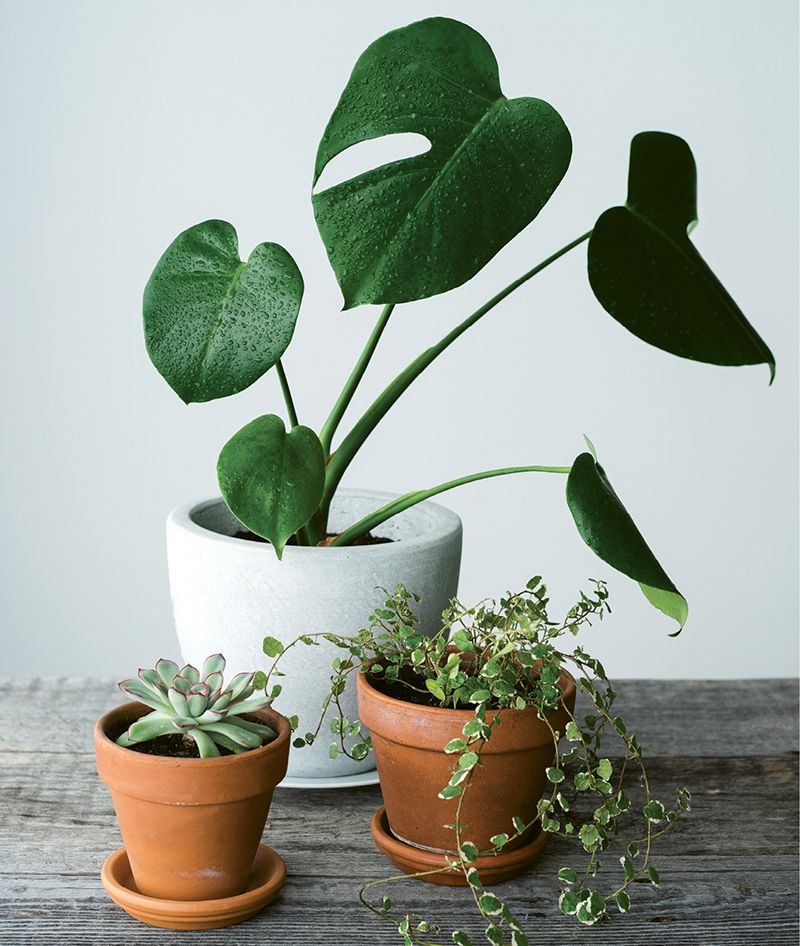To achieve your dreams of lush houseplant life, avoid these five big mistakes

Keeping plants alive inside—where conditions are quite different than the bright, humid tropics from which many of our favorites hail—is a science. But don’t let a difficult history with monsteras and snake plants, peace lilies and orchids defeat you. Instead, study up as Clemson Extension Horticulture Agent Amy Dabbs clues us in to the top five reasons indoor growers don’t make it:
➊ Over-watering. “Over-watering is the number-one thing that kills indoor plants,” says Dabbs, noting that they’re especially susceptible in winter, when their water needs are lower. “Put your finger in the soil up to the first knuckle, and don’t water unless it’s dry.” Good drainage is key, and that means never allowing any liquid that drains from the pot to remain pooled in a saucer beneath—this causes root rot.
➋ Under-watering. To thoroughly drench the soil, place the container in a sink and water until liquid runs out the bottom.
➌ Dramatically changing the environment. Have tropicals that spend summers outside and winters in? Transition them slowly from one environment to another—for example, by moving them from a sunny outdoor location into partial shade come cool weather, then finally into a bright interior space.
➍ It’s the wrong plant in the wrong place. “So much depends on lighting and humidity,” explains Dabbs. If leaves are dropping or yellowing, or stems are growing spindly, your plant’s probably not getting enough sun. On the other hand, too much light can scorch or fade foliage.
As for humidity: ferns, as well as epiphytes like air plants and orchids, are especially needy—aim to place them in a kitchen or bathroom. Direct heat from a fireplace or air register will parch plants; drafts from windows, doors, and AC vents are equally unwelcome.
➎ Low volume. “Nothing grates my nerves more than seeing six inches of pot exposed,” says Dabbs. The crown of the plant should be high in the pot, with soil within an inch of the rim; this gives roots room to grow. Soil degrades over time, so aim to repot about every year.
Get Lighting Right: To achieve your dreams of lush houseplant life, avoid these five big mistakes
A plant tag calling for something like “bright, indirect light” can feel as confusing as a party invite dictating “festive casual” attire. It all starts to make more sense once you figure out how your home is oriented: the strongest light streams through windows facing south and the weakest through those looking north. Pull up the compass on your phone and follow this cheat sheet.
■ High light: Within a couple feet of a window with a southern or southwestern exposure
■ Medium light: Beside an east or west window
■ Bright, indirect light: Three to five feet from a window facing south, east, or west
■ Low light: In front of a northern window, several feet from an east or west window, or near a window shaded by trees
To get tips, tricks, and indoor plant suggestions from local pros, click here.